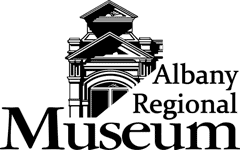By Cathy Ingalls, Albany Regional Museum board member
Some say that The Cottonwoods Ballroom on Highway 20 at Knox Butte Road east of Albany was in its day the most important entertainment venue between Portland and Eugene.
Today, people talk about rendezvousing at the cottonwoods junction or going to the grocery store, but how many know that the dance hall that no longer exists hosted some of the country’s most legendary musicians from the 1930s and into the ’60s.
Later before the ballroom was demolished, it became a disco nightclub, a bingo parlor and a place to gather for potlucks and to socialize on Sunday afternoons.
One reason the ballroom was a popular stop for musicians was it was only seven miles from Highway 99E, the main north/south artery in the Willamette Valley before the freeway was built. And admission was cheap: between 40 cents and $1.50, according to information on file at the Albany Regional Museum.
Harry and Gladys Wiley opened the venue about 1930, and no one knows for sure why the place was called The Cottonwoods Ballroom. Some say it certainly was to evoke Harlem’s famous Cotton Club, while others say it was because of a stand of nearby cottonwoods.
Another unknown is what type of flooring was in the building. Some say fir or cottonwood and later maple while others were convinced it was pine first and then maple.
There was a rumor that the ballroom was known nationally because the dance floor was the best in the county, the state and west of the Mississippi, according to Jim Creighton, who owns some of the dance club’s memorabilia and has researched its history.
He said there reportedly were valleys and depressions in the flooring so dancers momentum would change, while others were told that there was a leaf-spring suspension under the building, and there was a tale that ball bearings were installed under the dance floor.
To keep the ballroom family friendly, no alcohol was served but often patrons were known to step out into the parking lot to take a nip. To keep order, bouncers were stationed inside and out. After Prohibition, the building across the street, now a market, was thought to be a tavern and for some time an “unofficial” tavern.
In the 1930s, “all-colored bands,” as they were called performed and the most popular music at that time was known as “old-time,” and “hayseed.”
Then in the 1940s, big dance bands booked dates, and soldiers from Camp Adair north of Corvallis drove over for evenings of fun. Often the bands were comprised of all girls as many men at the time were at war.
Moving into the 1950s, mostly country and western groups performed.
Creighton said by far the biggest draw was 27-year-old Johnny Cash. Many concertgoers were forced to park miles away and then walk to see him.
Because there were no dressings rooms at the hall, performers during breaks often sat at tables and chatted with the patrons.
In 1939, the Wileys divorced and Harry left, but Gladys stayed on until 1960, when she closed the venue because of a loved one’s declining health and the popularity of dance halls was in decline.
In the mid-1990s, the building was torn down after heavy snow caused the roof to cave in. Now all that’s left are some old rock footings.
Here is a partial list of performers who appeared at The Cottonwoods Ballroom:
Louis Armstrong, Bobby Darin, Jerry Lee Lewis, Count Basie, Chuck Berry, The Coasters, The King Cole Trio, Fats Domino, The Drifters, Duane Eddy and Duke Ellington.
Others were Harry James, Carl Perkins, Little Richard and The Thunderbirds.
The persistent rumor that Elvis Presley played at the ballroom is untrue. The owners, Creighton said, tried to get him but it never worked out.

